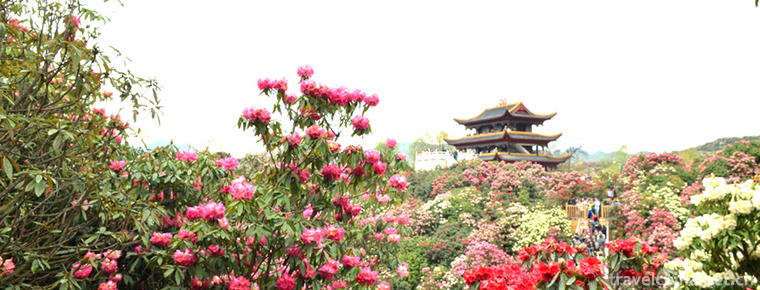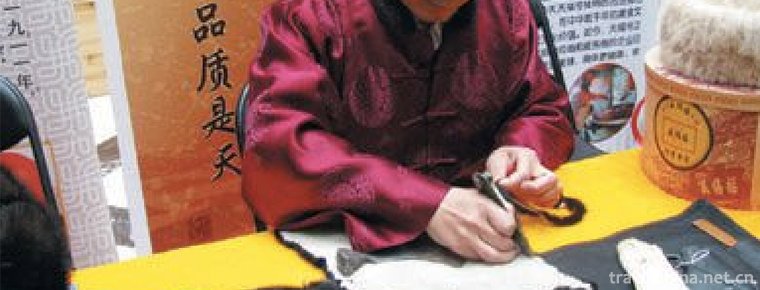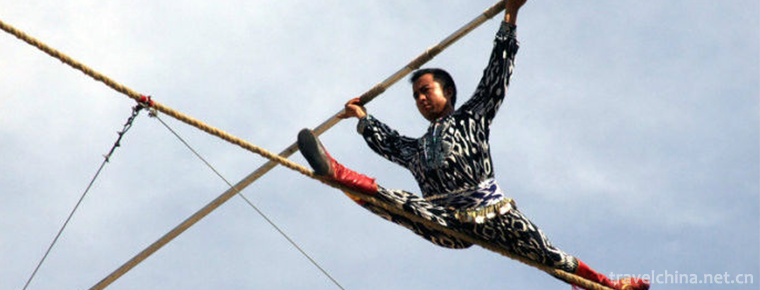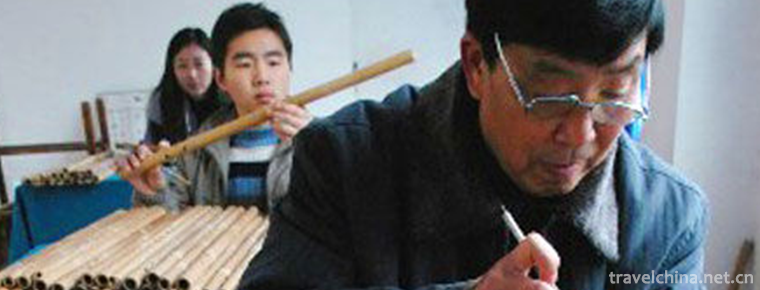Firing Techniques of Longquan Celadon
Firing Techniques of Longquan Celadon
Longquan celadon firing technology, the traditional ceramic technology of Longquan City, Lishui, Zhejiang Province, is one of the national intangible cultural heritage.
Longquan celadon originated in the Jin Dynasty and began to take shape in the Northern Period. It entered its heyday in the Song and Yuan Dynasties. The scale of making celadon was unprecedentedly large, and the craftsmanship reached its peak. It gradually declined in the Qing Dynasty. After the founding of New China, Longquan celadon began to gradually resume production, and constantly innovate in production techniques, and gradually entered a prosperous period.
On May 20, 2006, Longquan celadon firing technology was approved by the State Council and listed in the first batch of national intangible cultural heritage list. On September 30, 2009, at the 4th meeting of the UNESCO Intergovernmental Committee for the Protection of Intangible Cultural Heritage, the traditional firing techniques of Longquan celadon in Zhejiang Province were officially listed in the List of Representative Works of Human Intangible Cultural Heritage. As of December 2011, Longquan celadon's traditional firing technology is the first and only ceramics item selected by human beings.
historical origin
Budding stage
Longquan celadon originated in the Western Jin Dynasty. At that time, Longquan area was as rich as now in mineral resources, such as mountains, dense forests and porcelain stones. This first provided abundant fuel and raw materials for the production of celadon. Secondly, there were many rivers in Longquan area with convenient water transportation, which provided abundant water resources for firing celadon and was also conducive to the outflow of Longquan celadon celadon. Communication and dissemination. Therefore, most of Longquan kiln's workshops are located in places where there are mountains, waters and trees. It is convenient to obtain fuel, raw materials and water. During the embryonic period of Longquan celadon, the local people drew on the technology and experience of other areas to create a unique kind of celadon by utilizing local superior and rich natural conditions. Due to the lack of technology and experience, the celadon works of this period were made rough, monotonous and dark, all of them were light blue glazed porcelain. The fetal bones were mostly grey-white, and a few grey-dark, all of them were light blue glazed porcelain. The fetal bones were mostly grey-white, a few grey-black, and the fetal walls were thin and hard. The kiln industry in the Three Kingdoms and Jin Dynasty was not large, mainly in the family handicraft workshop, and did not form a large-scale professional porcelain firing factory.
With the passage of time, in the Five Dynasties and the mid-Northern Song Dynasty, the technology of making porcelain was gradually improved, the status of Longquan celadon was also improved, and gradually entered the upper class society, becoming a tribute to the court. At that time, the rulers of Wu and Yue Kingdom, in order to please the monarch of the Central Plains, paid numerous "secret-color porcelain" to the Central Plains every year to show their repair. The huge demand stimulated the production of porcelain, and the shortage of supply and demand made Yuezhou's kilns unable to undertake such a large number of porcelain manufacturing. Under such circumstances, Longquan Kiln ushered in its own excellent development opportunities. At the same time, the population movement has brought a group of excellent pottery artisans to Longquan area. They spread advanced technology and rich experience to the local pottery workshop, making the process and process of making porcelain more careful and complex, making the color and lustre of the celadon more mellow, making the skills of celadon by leaps and bounds, improving the quality rapidly, and expanding the scale of the kiln industry. Longquan kiln has become the first kiln in the south of the Yangtze River with its pure glaze color and delicate texture.
meridian
From the late Northern Song Dynasty to the early Yuan Dynasty, Longquan celadon did not meet the achievements, but drew on its strengths to make up for its weaknesses. In order to obtain more exquisite and exquisite porcelains, we have continuously upgraded celadon exquisite craftsmanship while absorbing other famous kiln porcelain technology. On the basis of maintaining our advantages, we have studied and renovated celadon. We have persevered to achieve a peak state in order to obtain more exquisite and unparalleled porcelains. At this time, Longquan kiln's scale was further expanded, and it became the largest porcelain industry center in Song Dynasty. According to historical records, in the Song and Yuan Dynasties, "Porcelain kilns stood on both sides of the Oujiang River, with fireworks facing each other. Porcelain boats in the river came and went like weaving." Longquan celadon has opened up a new look, this period is a golden age of its development.
Longquan celadon in the Southern Song Dynasty can stand alone and occupy all the fanghua, in addition to their own efforts to explore, but also by the turbulent society at that time and the preferences of Wang Sun aristocracy. During the alternation of Song Dynasty and Song Dynasty, wars broke out in great numbers, especially in the north. At that time, the official kilns in the north were overburdened and declined one after another. On the one hand, Longquan celadon in the South provided an opportunity for development. On the other hand, it encouraged the craftsmen who carried the excellent ceramic technology from the north to move to Jiangsu and Zhejiang regions. Longquan celadon integrated the southern and Northern techniques, thus creating a new one. Made the peak in the history of Chinese celadon.
Recession period
Longquan celadon continued to attract worldwide attention when it entered the society of Yuan Dynasty. The scale of Longquan kiln was further expanded in the huge demand, and the number of kiln sites and products reached an unprecedented level. But in the late Yuan Dynasty, social unrest, class and national contradictions intensified, and the smoke of war spread everywhere, seriously affecting the production of celadon. Celadon in this period also began to decline in quality, firing engineering was no longer strictly controlled, the fetal bone gradually became thicker and rougher, most of the kilns were not well trimmed after the body was returned to shape, the shaft layer was thinned, the glaze was blue and yellow, and the shape and style were not as elegant and beautiful as before. In the Ming and Qing Dynasties, ethnic and class contradictions still existed. The greatest blow was the arrogance of Chinese emperors, the policy of closing the country, the decline of navigation, the sharp decline in export sales of celadon, the closure of Longquan kilns and the disappearance of official kilns. In order to make a living, the common folk celadon was fired and the celadon shape was made around the civil kilns with practicability as its day. The quality of Longquan celadon is not as good as before. Longquan celadon, which was very prosperous for a while, is gradually washed away and buried in the torrent of years.
Convalescence
After the founding of the People's Republic of China, Longquan celadon has regained the attention of the state, pulling away the dust and seeing the sun again. In 1957, Premier Zhou Enlai issued a directive to restore celadon production. Under the call of this directive, Zhejiang Province was composed of eight experts to form an antique group. In the following spring, the first kiln for restoring Longquan celadon was ignited, and the lost celadon production technology was developed again, and the scattered flowers blossomed again. After 50 years of recovery and development, Longquan celadon has entered a new period of prosperity. Although the peak of the Southern Song Dynasty can not be surpassed, there are also new breakthroughs on the basis of inheritance and imitation of antiquity. Especially with the rapid development of various technologies in modern society, the conditions and facilities needed for firing celadon have been improved rapidly and guaranteed firmly. Longquan celadon can be as beautiful as that of Song and Yuan Dynasty in glaze color and texture. Moreover, with the unique understanding of modern artists, Longquan celadon interprets the unique aesthetic connotation of contemporary society.
Process characteristics
Longquan kiln has a production history of more than 1600 years. Its works are mainly glazed. The glaze is often applied many times. The glaze is thicker and the glass has a strong light sensitivity. Longquan kiln white fetal celadon, fine and compact, white in the pan-green. The glaze layer is soft and non-sliced. The exposed part of the sole is ochre red, commonly known as "cinnabar bottom". The famous Longquan kiln pink green glaze and plum green glaze at home and abroad, the glaze crystal blue jade, its tone can be comparable to jadeite, reaching the best realm of ancient Chinese green.
Technological process
Longquan celadon technological process consists of nine links: batching, shaping, trimming, decoration, glazing and plain firing, boxes filling, kiln filling and firing. Among them, glazing and plain firing are very characteristic.
Glazing: It can be divided into several steps: glazing, dipping, glazing and spraying. Thick glaze products usually need several layers of glaze, one layer of plain firing, and then again plain firing glaze, so that repeated four or five times, most of them need to apply more than ten layers of glaze before entering the burning.
Vegetable burning: Vegetable burning temperature is relatively low, generally around 800 degrees Celsius. And glaze firing is about 1200 degrees Celsius, according to the requirements of gradual heating, temperature control, control the atmosphere in the kiln, and finally firing finished products. From the Southern Song Dynasty to the early Yuan Dynasty, Longquan Kiln had fired thin-bodied original glaze objects, one layer of glaze fired once, the thickest up to more than ten layers.
Inheritance and protection
Inheritance value
Longquan kiln is a famous celadon kiln with the longest firing age, the widest distribution of kiln sites, the highest product quality, the largest production scale and the largest export range in the history of Chinese ceramics. Celadon firing is not only a technology, but also an art. Superior celadon green is moist, clear and transparent, rich in charm, with the beauty of "like jade", reflecting profound cultural connotation.
Inheritance status
After the founding of the People's Republic of China, the declining celadon firing process since the end of the Qing Dynasty and the beginning of the Republic of China was restored. However, the function of celadon ware is gradually replaced by modern articles, so there is not much social demand. At present, some techniques of celadon production are gradually forgotten, and with the involvement of modern machinery, the traditional hand-made ceramic technology is facing serious challenges and is on the verge of extinction, which urgently needs rescue and protection.
Inheriting characters
Xu Chaoxing, male, Han nationality, born in March 1943 in Longquan City, Zhejiang Province. In May 2006, Longquan celadon firing technology was listed in the first batch of national intangible cultural heritage list of traditional skills, item number VIII-9. In June 2007, Xu Chaoxing was selected as the representative successor of the first batch of national intangible cultural heritage projects and declared by Longquan City, Zhejiang Province. When Xu Chaoxing was 13 years old, he studied ceramic bowl making. When he was 15 years old, he learned from Li Huaide's old artist. He was skilled in grinding, batching and blanking. In 1963, Xu Chaoxing entered Zhejiang Academy of Fine Arts to make graduation projects for students. During this period, he studied many books and consulted teachers and classmates. His theoretical knowledge has been greatly improved. Xu Chaoxing inherited the technical characteristics of Longquan celadon kiln and younger brother kiln as well as the excellent opening techniques. At the same time, according to the technological characteristics of Longquan celadon, Xu Chaoxing combines it with art decoration, embodying the natural beauty of the products with the characteristics of glaze, tire and art patterns. In 1982, his work "52 cm welcome tray" won the first prize of the 2nd National Ceramic Design Competition. He is known as the "national treasure" of the contemporary era and is now collected in the "Ziguang Pavilion" in Zhongnanhai. His works "monkey tray" and "grey glazed water bowl" are collected in the Chinese Art Museum, and many other works have won various prizes and been collected everywhere. He was awarded the title of "Master of Chinese Arts and Crafts". Xu Chaoxing also devoted himself to the inheritance of traditional art. His local apprentices, Lu Weisun and Chen Aiming, also had high attainments in Celadon production.
protective measures
In September 2009, Longquan celadon's traditional firing techniques were successfully selected into the list of representative works of human intangible cultural heritage published by UNESCO, and became the only ceramics item in the human "non-heritage" project.
Longquan City has established a contingent of representative inheritors who have mastered the exquisite core skills. In the way of inheritance of skills, we encourage the family inheritance and the mode of succession of teachers and apprentices.
major schools
Traditionally, there are two kinds of kilns: Geyao kiln and Diyao kiln. Brother and younger brother's kiln theory comes from the records of Ming people: "The Zhang brothers of Longquan County in Song Chuzhou are good at managing porcelain. Zhang Sheng's two pottery houses are Zhang Longquan, also known as younger brother's kiln. Zhang Shengyi's brother Yao's brother is also." Whether there are really two brothers, Wang can not be tested. But this makes Longquan kiln form two different firing methods.
In the middle and late Southern Song Dynasty, there appeared a kind of black-bodied open-sheet porcelain, namely the so-called Ge kiln porcelain, which was called the five famous kilns of the Song Dynasty together with the famous officials, Ru, Ding and Jun. Its characteristics are that the bodily is as thin as paper, the glaze is as thick as jade, the glaze is covered with stripes, the purple iron feet, and the tire is gray-black. This kind of product wins by shape, glaze color and glaze opening. Because opening is difficult to be controlled artificially, cracks are unintentional and natural. It can be said to be made by nature. It is more in line with the aesthetic taste of natural simplicity and antique fragrance.
Another kind of white glaze green, glaze color to pink green, plum green for the most, followed by soybean green, referring to the younger brother kiln, known as the giant folk kiln. Green glaze, with orange-red sole or bare figure, produces a pleasant visual effect. From the middle and late Southern Song Dynasty, especially in the Yuan Dynasty, a large number of works using exposed fetuses appeared, such as the faces, hands and feet of figures, clouds, dragons and flowers on the inner bottom of dishes, decorating with unique charm.
social influence
Important exhibition
From November 16 to 18, 2012, Longquan City held the 7th China Longquan Celadon-Longquan Sword Festival. The traditional firing techniques of Longquan Celadon were displayed in the exhibition.
On Nov. 10, 2017, the first exhibition of "cloud breaking celestial celestial celestial celestial ware" was held at the Shanghai Mass Art Museum. The traditional firing techniques of Longquan celestial ware were displayed in the exhibition. Xie Xiaoquan, deputy curator of the National Museum of China, highly appraised 22 works of five Longquan celadon masters after his visit, calling them "full of wisdom, strong heart and blood" and "celadon's wonderful harmony of heaven and man".

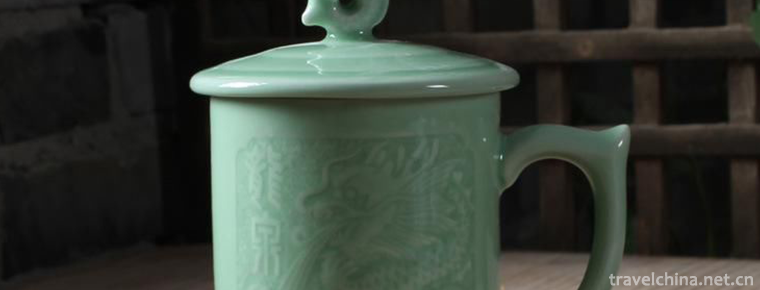
-
Changbai Mountains
Changbai Mountains are the birthplace of the Yalu River, Songhua River and Tumen river. It is the birthplace of Chinese Manchu and the sacred mountain of Manchu culture.
Views: 206 Time 2018-10-30 -
Jinggangshan MountainMt Jinggang
Jinggangshan, National AAAAA Tourist Scenic Spot, National Key Scenic Spot, National Nature Reserve, Chinese Cultural Scenic Spot.
Views: 190 Time 2018-12-08 -
Baili Rhododendron Scenic Area in Bijie City
Bijie Baili Rhododendron Scenic Area is located in the northwest of Guizhou Province and the central part of Bijie City. It belongs to the Baili Rhododendron Management Area of Bijie City..
Views: 218 Time 2018-12-12 -
dalian forest zoo
Dalian Forest Zoo is located in Baiyun Mountain Scenic Area, Dalian, covering an area of 7.2 square kilometers. The zoo is divided into two parts: the first phase of captivity and the second phase of .
Views: 158 Time 2019-01-06 -
Qinghai Kekexili National Nature Reserve Hoh Xil
The Kekexili National Nature Reserve in Qinghai Province is located in the western part of Yushu Tibetan Autonomous Prefecture with a total area of 4.5 million hectares.
Views: 165 Time 2019-01-29 -
Tibetan Cobalt Technology
Zhang Zhaxi, a Tibetan cobalt-smelting craftsman over half a century old, told reporters that he was just "catching its tail" when the craft was losing its popularity..
Views: 164 Time 2019-04-15 -
Gourd sculpture
There are two techniques for carving gourds. One is to use three kinds of special steel needles, large, medium and small, to carve the landscape, flowers and characters in the gourd.
Views: 386 Time 2019-05-03 -
Making Skills of Sheng Xifu Leather Cap
Shengxifu leather cap production skills need to go through the whole process from matching, picking, blowing, brushing, flat leather, shaving, hand needle sewing to machine sewing, and finally complet.
Views: 134 Time 2019-06-14 -
Flyover wrestling
In the 1930s, when Peiping wrestling was very popular, Peiping wrestling was famous all over the country. At that time, the strongest wrestling master of Peiping overpass was Shen San (Shen Yousan), B.
Views: 372 Time 2019-06-21 -
Uygur Dawazi
Dawazi is an ancient traditional acrobatic performing art of the Uygur people. "Da" means "hanging" in Uyghur, and "Wazi" means someone who likes to do something. The wor.
Views: 86 Time 2019-06-26 -
Small febrile coma
Xiao Redun is a kind of traditional Wu rhetoric banter popular in Jiangsu, Zhejiang and Shanghai. It is also known as "Xiaogongshu", commonly known as "selling pear ointment candy".
Views: 107 Time 2019-07-06 -
Production Techniques of Yuping Xiaodi
Yuping Xiaodi is made of a special bamboo as raw material through four processes: material taking, blank making, carving and finished product. The manufacturing process is complex and all of them are .
Views: 153 Time 2019-07-16


